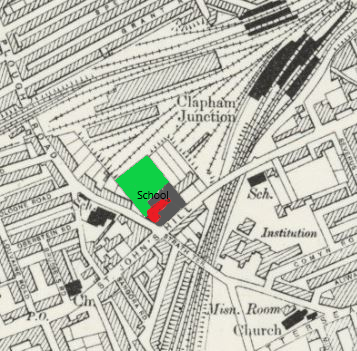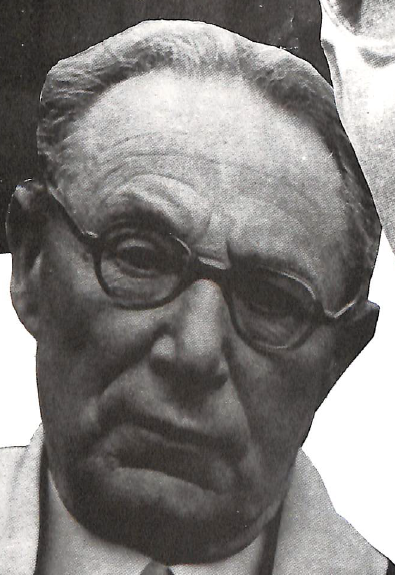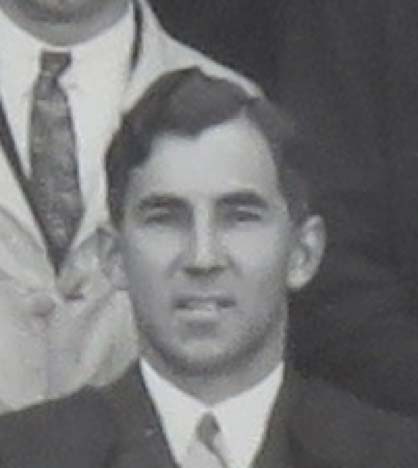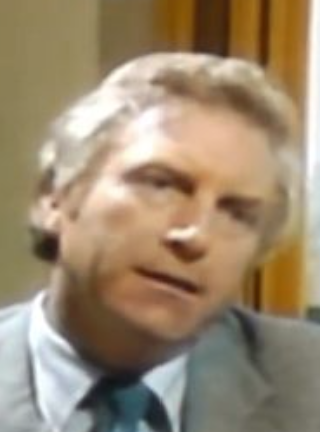A brief history of Battersea Grammar School 1700 – 1977
The founding of the school
The St Johns came to England with the Conqueror. They featured in the Crusades, the English Civil War (on both sides) and the Ulster Plantations. They acquired the manor of Battersea in 1625, then a country retreat upstream from the hurly-burly of the capital. Sir Walter St John succeeded to the baronetcy and the family estates in 1653. He and his wife, Lady Joanna, were a pious, charitable couple who did much to help the poor folk of Battersea. On 7 September 1700 Sir Walter signed the Trust Deed which gave permanence to a school he had already been maintaining for some thirty years. The foundation was for a free school for twenty poor boys from Battersea who were ‘to be elected and putt into the said school……..to read write and to cast accounts’. The ‘Schoole Master’ was required to be an Oxbridge MA and was at liberty to accept fee paying pupils besides the twenty poor scholars. Sir Walter appointed his chaplain who was also the vicar of Battersea Parish Church as the first master under the new arrangements, a tradition which persisted for 150 years.
.


By 1750 the school had grown in prestige and size with nearly ninety pupils. It included a large proportion of boarders, and girls as well as boys. It remained the only school of any significance in Battersea until the advent of the so called National School in 1799 which operated according to educational principles developed nationally by the Society for the Propagation of Christian Knowledge
From about 1810 the new vicar of Battersea actively encouraged the development of the National School. On his appointment as master of the foundation school, following the death of the curate who had held the position because the vicar’s predecessor did not have the necessary qualifications, he decided to run the two schools as one, to the extent that for a while Sir Walter’s name dropped out of use. However the misuse of trust funds in the late eighteen forties prompted some of the parishioners to petition the Court of Chancery to have the foundation school re-established as a separate institution. In 1853 the free school regained its independence as a boys’ school and prospered. The girls were moved to a new school in Green Lane. Six years later the trustees acquired more land, demolished the original school house in Battersea High Street and erected a new building designed by William Butterfield to accommodate the 300 boys then on the roll.
The Elementary Education Act 1870 extended the provision of the then existing voluntary system of elementary education and established school boards with powers to raise local rates to provide the necessary additional funds. The Endowed Schools Act 1869 had already established a commission to deal with abuses in educational trusts which had seen a shake-up amongst the Sir Walter St John’s trustees. They responded to criticism that ‘of middle-class education in Battersea there was next to none, and higher education is absolutely unrepresented’ by proposing an upper school for 250 fee paying scholars, teaching advanced subjects on a new site, and a middle school on the High Street site in addition to an elementary school. In reply to protests that the proposals meant that a charity intended for the poor was being used to provide education for the wealthy, the Trust said that it would continue to provide the elementary school and that the original twenty free places would be safeguarded, with the option of able pupils going on to the middle school. The new Upper School offered ten entrance foundation scholarships to sons of residents of the parish.
The Bindley Years


The following January the Rev E A Richardson was appointed headmaster of the Sir Walter St John’s Upper School, which was very soon renamed Battersea Grammar School, and which opened on 12 April 1875. For the first five years the school ran at a loss. The governors were then told by the Charity Commissioners to put their house in order as they considered it intolerable that the Trust should be subsidizing the wealthier parents of the grammar school. The appointment of William Bindley in 1880 as headmaster, a rise in rolls and the closure of the elementary school turned things around for the Trust and the new school survived. The compulsory purchase of part of the playing fields by the London and South Western Railway in 1887 provided added funds. By 1891 there were 160 scholars and the curriculum had been enlarged to provide an education ‘consistent with that of a first grade school of a then modern type’. In 1895 an upper assembly hall and additional classrooms were built at a cost of £3400. The old lodge buildings were used for the head’s accommodation, a boardroom and a chemical laboratory.

At the turn of the century the governing body comprised two governors appointed by the Lord of the Manor of Battersea, two by Vestry of Battersea, two by the London County Council, two by the School Board of London and one by the Technical Education Board which contributed around 15% of the school’s income. The remainder came from school fees. The 150 or so pupils, all day boys, were divided into 6 forms with the 5th form divided into an upper and lower form. But a second compulsory purchase by the railway of more of the playing field reduced the site to three-quarters of an acre and severely restricted the playing of games. By 1906 the roll had increased to around 250 and the premises were again enlarged by an ingeniously designed new wing which included a covered play ground. The house system (St John’s, Bolingbroke, Spencer and Trinity) was introduced the same year to encourage healthy competition and team work. Nevertheless the search was on for a less congested site. The LCC offered two options – the governors rejected one (Cedars Road), the other (Beechcroft Road) was lost because of the war. On the outbreak of hostilities in 1914 a school army cadet corps was formed in response to the wave of patriotism which swept the country. The school magazines continuously referred to the need to do one’s duty in various ways, even to the extent of joining the old boys’ association. In the war 77 old boys and staff were killed. No record exists about other casualties.
The Ellis Years

In the summer term of 1918 William Bindley retired after 43 years at the school. His replacement, Henry Ellis was appointed temporarily with a view to closing down the school, but the government’s raising of the school leaving age to 14 resulted in pupil numbers rising to 450 and necessitated the creation of a fifth house, Erskine. The increase together with the opportunity to the buy the Burntwood Lane playing fields for the Trust strengthened the head’s and the governors’ determination to keep the school in being. The Twenties saw the school develop both in the academic and sporting arenas and saw the arrival of a number of masters who were to spend their working lives at the school. The longevity of the BGS headmasters and many of the teaching staff, the activities of the old boys, the traditions of the inter-house competitions, and things like the Cadet Corps camp, which was held in the same field in White Cliff Bay continuously from 1924 to 1955 (except for the war years), engendered a homogeneity of spirit amongst Old Grammarians which has persisted into the 21st century, twenty five years after the school was closed. Meanwhile the search was on for new premises.
When it was that Henry Ellis first set eyes on the Abbotswood Road site is not known. He was known to be impatient with procrastination and red tape and must have had a hand in prompting the LCC’s offer of the 8 acre site, which the governors accepted. J E K Harrison, an old boy, was appointed architect for the new buildings, which cost £55,000. This sum was met by the sale of the St John’s Hill site and by equal amounts from the LCC and Board of Education. The school was designed to accommodate 540 pupils and at the time was one of the most modern in the country. The school moved in the autumn 1936, but three years later was evacuated to Worthing and when France fell moved on to Hertford. Here the head strove to make the production of vegetables his principal war aim, whilst George Harding and Bill Spooner, stalwart supporters of the Old Grammarians’ Association, maintained an information system, so far as national security allowed, about the whereabouts of old boys serving HM Forces. In the conflict 62 old boys and staff lost their lives. Again we have no information about casualties.
The Langford Years

The Education Act of 1944 had a profound effect on the school. Because the Trust had insufficient funds for it to remain an aided school, the governors had no choice but to allow the school to become a voluntary controlled secondary grammar school under the London County Council. This meant that all costs were met by the council which in return obtained control by having an overwhelming majority on the governing body. The method of admission was through the junior leaving procedure of the LCC, otherwise known as the eleven-plus. Henry Ellis was said to have little sympathy with the new arrangements and, having led the school back to Streatham, handed over to Walter Langford in September 1945. The school quickly got back into its stride. The inter-house competition, speech days, major drama productions, the Old Grammarians Association were all revived and a sixth house, Dawnay, resurrected.
In 1950 the school celebrated its 250th anniversary jointly with Sir Walter St John’s School over a two week period in the July. The celebrations included a commemoration service at St Mary’s Parish Church, Battersea. At that year’s Speech Day the head reported that school numbers had stabilised at about 560 of whom 75 were in the sixth forms. Ten years later numbers had risen to 631 with a first year entry of 100, ten of whom were awarded a governors’ place. When Walter Langford retired in 1965 one of the tributes then made referred to the successful way he had dealt with the marked increase in the size of the school during his tenure.
The Last Years



Walter Langford was succeeded by James Cowan at whose first speech day the chairman of the school governors outlined the implications of the government’s plans for the reorganisation of secondary education in London. In 1967 the head was able report that the school was to continue in its then current form ‘for some time’. However the uncertainties continued and were to bedevil his headship. He even had to deal with the emergence of student power. He retired in 1972 to be succeeded by John Phillips the following year. Gerald Cooley, who joined the staff in 1950, was appointed acting head during the interregnum.
By now the fears for the future of the school were very real. In 1975 the Inner London Education Authority, the successor body to the LCC, gave notice of its intention to establish a mixed county comprehensive school and to cease to maintain Battersea Grammar School. Despite energetic lobbying by the school parents’ association and the Old Grammarians’ Association, the school closed at the end of the summer term 1977. The staff and pupils were amalgamated with those of the Rosa Bassett Grammar School in the new Furzedown Secondary School. Sir Walter St John’s School similarly was closed in 1986. However it is pleasing to record that both sets of buildings remain in use as schools, Streatham Hill and Clapham High School having taken over the Abbotswood Road site in 1993, and a Thomas’ Day School the Butterfield building. By sad comparison the old St John’s Hill site is graced by a derelict cinema!
M F Poffley(BGS 1945 – 1953)
12 March 2002
References:
A History of Sir Walter St John’s School, Battersea 1700-1986 (Frank T Smallwood)
The Pentland Press Ltd 1998 ISBN1 85821 558 7
The Founding of Battersea Grammar School (Frank T Smallwood) (unpublished – BGS archives)
A History of Battersea Grammar School to 1936, a study by Christine Webb serialised in six parts in The Old Grammarian from June 1977
Battersea Grammar School magazines 1904 – 1977
